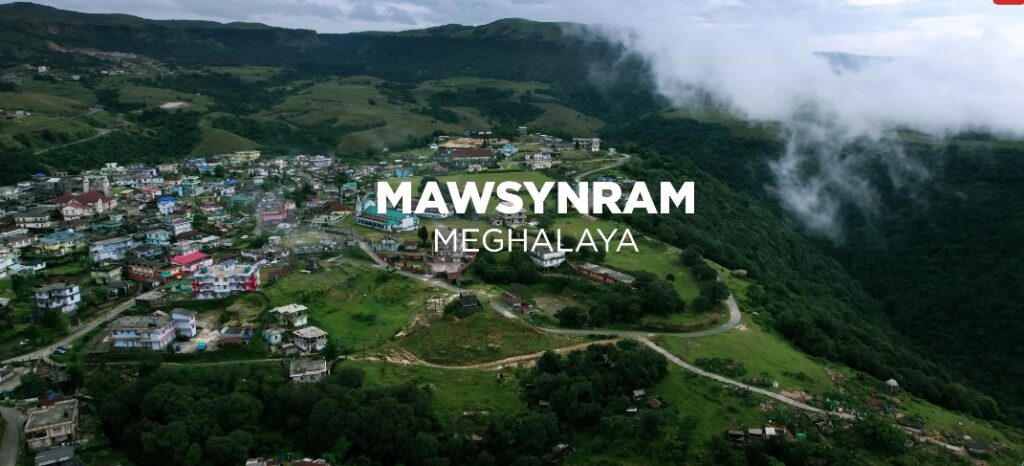Mawsynram, a picturesque village nestled in the East Khasi Hills of Meghalaya, India, holds the unique distinction of being the wettest place on Earth. Officially recognized by the Guinness World Records, Mawsynram experiences some of the heaviest rainfall on the planet, making it a fascinating destination for travelers and weather enthusiasts alike. In this comprehensive guide, we explore the remarkable weather patterns, the resilient Khasi community, the geographical factors that contribute to Mawsynram’s heavy rainfall, and the cultural tapestry that makes this region truly captivating.
Mawsynram’s Unique Weather: A Symphony of Rain
Mawsynram’s rainfall is legendary, with an annual average of 11,400 mm (450 inches). The village’s climate is dominated by the monsoon season, which typically runs from June to September. During this time, Mawsynram is enveloped in thick clouds, and torrential rains often transform the landscape into a lush, mist-covered paradise.
The intensity of the rainfall can be both beautiful and overwhelming. The region experiences dramatic weather phenomena, such as rapidly moving clouds that skim the ground, and thick fog that can reduce visibility to just a few meters. The constant sound of rain, the roar of waterfalls, and the gurgling of swollen rivers create a truly unique ambiance that defines life in Mawsynram.
This near-constant rainfall also nurtures a rich and diverse ecosystem. Mosses, ferns, and orchids thrive in the perpetually damp environment, contributing to the area’s biodiversity. Whether you’re a nature lover, a photographer, or a weather enthusiast, Mawsynram offers a rare opportunity to witness nature’s raw power and beauty.
The Resilient Khasi Community: Adapting to the Wettest Place on Earth
The Khasi people, the indigenous inhabitants of Mawsynram, have lived harmoniously with the extreme weather for generations. Their deep understanding of the environment and their ingenious adaptations to the challenging conditions of their home are a testament to their resilience.
One of the most iconic features of Khasi architecture is the design of their homes. Built with locally sourced bamboo and thatch, the homes are equipped with steeply slanted roofs that effectively channel rainwater away, preventing leaks and maintaining structural integrity. The traditional “Khnup” umbrella, crafted from bamboo and banana leaves, is another example of the community’s innovative spirit. These umbrellas allow the people of Mawsynram to carry on with their daily activities, even during the heaviest downpours.
Agriculture in Mawsynram also reflects a unique adaptation to the wet climate. Local farmers cultivate crops that thrive in wet conditions, such as rice, potatoes, and various vegetables. The wet environment has shaped the region’s agricultural practices, with careful crop rotation and irrigation methods developed to make the most of the abundant rainfall.
The Geography of Mawsynram: Why It Gets So Much Rain
Mawsynram’s location plays a crucial role in its extraordinary rainfall. Situated on the windward side of the Khasi Hills, the village faces the Bay of Bengal, from where the monsoon winds originate. These winds carry large amounts of moisture, and when they hit the steep slopes of the Khasi Hills, they are forced upwards, cooling as they rise. This cooling process leads to condensation and the release of vast amounts of rainfall in the region.
The topography of the Khasi Hills, with its deep valleys and sharp slopes, further enhances the rainfall. As the moist air is funneled through these valleys, it experiences a concentration of precipitation, making Mawsynram one of the wettest places on Earth. The orographic lift – the process by which air is forced upward over mountain ranges – combined with the funneling effect of the hills, creates a perfect storm of precipitation.
Cultural Richness: Exploring Mawsynram’s Heritage
Beyond the rain, Mawsynram is a region steeped in culture and history. The Khasi people have a fascinating matrilineal society, where lineage and inheritance are passed down through the female line. This unique social structure shapes the community’s values, traditions, and daily life.
The Khasi people have a strong oral tradition, with stories, songs, and legends passed down through generations. These cultural narratives often reflect the community’s deep respect for nature and their connection to the land. Visitors to Mawsynram will encounter a warm and welcoming community that is eager to share their traditions and stories.
Visiting Mawsynram: What to Expect and Why It’s Worth the Trip
While the constant rain may seem daunting to some, Mawsynram offers an unforgettable experience for those who seek adventure and a closer connection to nature. The misty landscapes, lush greenery, and powerful waterfalls create an almost otherworldly atmosphere that is perfect for nature lovers, photographers, and anyone interested in experiencing one of the most unique climates on Earth.
If you’re planning a visit, the best time to travel to Mawsynram is during the monsoon season, when the landscape is at its most vibrant. However, be prepared for heavy rainfall, and make sure to pack appropriately for the wet conditions.
Mawsynram’s Enduring Charm
Mawsynram is more than just the wettest place on Earth; it’s a place of extraordinary natural beauty, a community of resilient people, and a rich cultural heritage. From its record-breaking rainfall to the ingenuity of the Khasi community, Mawsynram offers a rare opportunity to explore one of the most fascinating corners of the world. Whether you’re drawn to the unique weather, the vibrant culture, or the breathtaking landscapes, Mawsynram promises an unforgettable experience that will stay with you long after the rain stops.

